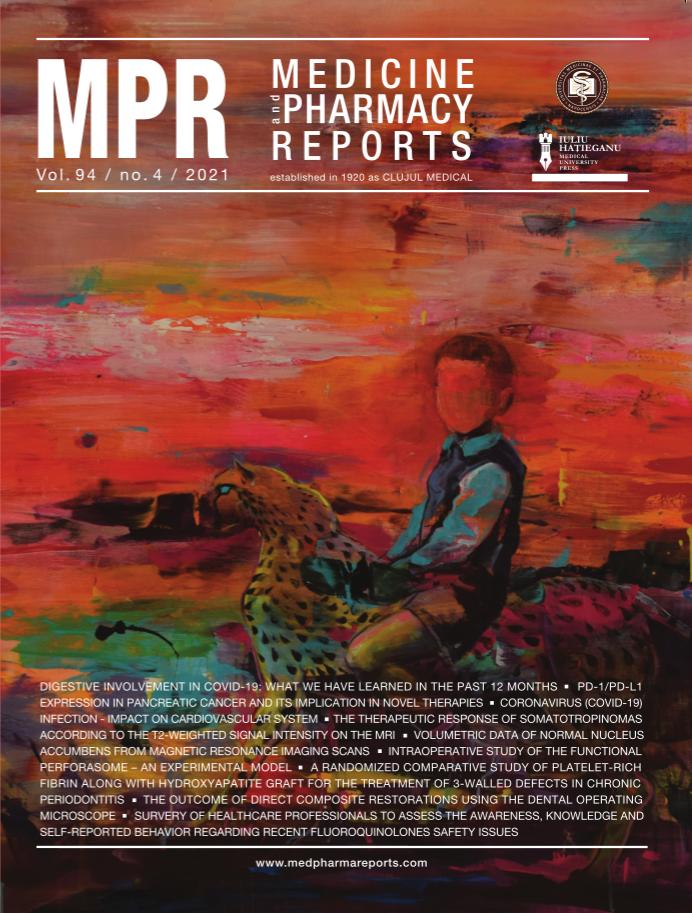Effect of brushing on colour stability of nanohybrid composite after immersion in brewed beverages – an in vitro study
DOI:
https://doi.org/10.15386/mpr-1850Keywords:
nanohybrid composite, spectrophotometer, tea, coffee, brushing, non-brushingAbstract
Background and aims. In today’s world, everyone is mindful of one’s appearance and appreciates aesthetics. Of the various restorative materials available, composites are considered as the most aesthetic with good color stability. This study aims at finding the effect of brushing on the color stability of nanohybrid composite after being immersed in various beverages.
Methods. Thirty disk specimens were prepared for each staining solution (N=30), with a total of 90 specimens. The disk specimens for each staining solution were then sub divided into 2 groups (N=15): brushing and non-brushing. After preparation, the specimens were soaked in distilled water for 24 hours in separate containers. Baseline color of the samples was evaluated using spectrophotometer. The samples were then immersed in tea, coffee or water. The groups of samples to be brushed were held in the mold and 20 strokes of brushing using an electronically powered toothbrush were done on each side of the disk sample. The color was re-evaluated after a period of 14 days.
Results. When comparing among the three beverages, tea showed the highest ΔE*ab indicating greatest discoloration when compared to coffee and water. This can be graded as tea > coffee > water. However, statistically there was no significant difference between tea and coffee. When compared within tea, coffee, or water specimens the non - brushed specimens showed greater discoloration compared to the brushed specimens both clinically and statistically.
Conclusion. When immersing the specimens in the solutions, tea showed more color change compared to coffee, making the specimens clinically unacceptable. However, brushing the specimens reduced the discoloration when compared to non–brushing, making the coffee specimens clinically acceptable.
Downloads
Published
How to Cite
Issue
Section
License
The authors are required to transfer the copyright of the published paper to the journal. This is done by agreeing to sign the Copyright Assignment Form. Whenever the case, authors are also required to send permissions to reproduce material (such as illustrations) from the copyright holder.

The papers published in the journal are licensed under a Creative Commons Attribution-NonCommercial-NoDerivatives 4.0 International License.

